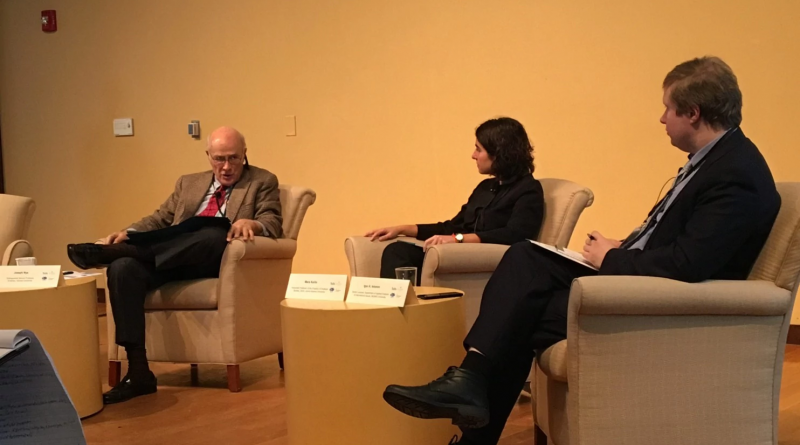Reflections on U.S.-Russia Relations Conference
By Daniel Drezner, Professor of International Politics, The Fletcher School
Last week I helped organize and participated in a conference on U.S.-Russia relations featuring an array of speakers from the United States and Russia’s MGIMO University at The Fletcher School. There were seven full-blown panels across an array of contentious issues, including cyber security, the Middle East and the historical roots of current bilateral tensions.
My boss, Dean James Stavridis, framed the current state of the relationship quite well: Things are not as bad as they were during the Cold War, but they are the worst they have been since the Soviet Union collapsed. Indeed, the head of MGIMO University could not attend the conference as intended because the U.S. Embassy in Moscow stopped issuing travel visas.
So what were my takeaways from the conference? Three come to mind:
1. Talking is good, but academics should not be the only ones doing the talking. When official relations between two countries are frozen, sometimes nonofficial elites will attempt to jump-start a dialogue. This is called Track II diplomacy; Track I is official diplomacy.
There was some of that kind of feeling-out process at The Fletcher School. To be blunt, however, it is extremely difficult to guide a bilateral great-power relationship using Track II methods. There are simply too many areas of interaction between the United States and the Russian Federation for a Track II process to handle.
It is therefore not surprising that several of the participants discussed the need for more official contacts. Kimberly Marten of Barnard College, for example, urged the restoration of military-to-military contacts between the two countries. While there is a military hotline in Syria, overall contacts were frozen in 2014 after the war in Ukraine broke out. That seems unwise.
2. Neither country is monolithic, but the United States is more divided right now. The Russian participants varied in their degree of solidarity with the administration of President Vladimir Putin. Tatiana Shakleina and Andrey Baykov stoutly defended the Russian government’s positions toward the West and toward Ukraine, respectively. Other participants, however, acknowledged that aspects of Russian policy in, say, the Middle East might be somewhat problematic.
The variations within Russia’s contingent, however, were dwarfed by the gap between the U.S. participants and the Trump administration’s policies. From the Middle East to Europe to the Pacific Rim to the global economy, the question U.S. participants had to address were: a) How much of a break was the Trump administration from the past?; and b) Was this break permanent? There was a growing recognition that President Trump’s foreign policy legacy will last longer than most experts would care to admit.
3. No one in power in Moscow or Washington is a strategic genius. Joseph Nye summed up the current state of the relationship by pointing out that Putin had been too clever by half in intervening in the 2016 election as U.S. intelligence agencies said he did. In taking such ham-handed steps, Putin has all but made it impossible for Trump to have the political leeway to do anything Putin wants.
If Putin has overreached, Trump has simply flummoxed foreign policy watchers. Some of the conference attendees sympathized with some of Trump’s foreign policy moves (See: North Korea). The general consensus, however, was that the biggest winner from the Age of Trump was not the United States, not Russia, but China. Talk about Eurasian integration focused more on One Belt, One Road than Russia’s Eurasian Economic Union. Beijing has been able to expand its influence in Central Asia and the Pacific Rim while not getting mired down in the Middle East.
There will be a follow-up conference in Moscow in May 2018. I look forward to learning even more about the bilateral relationship then.
This article was republished from The Washington Post.

